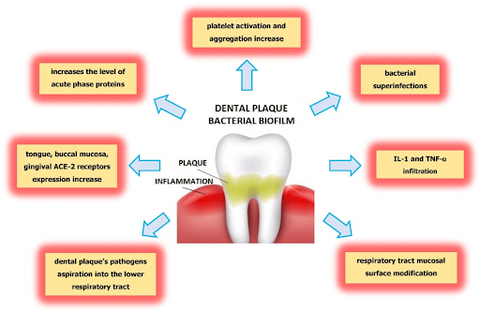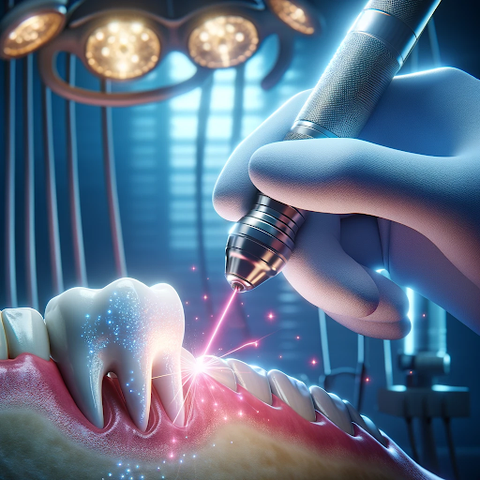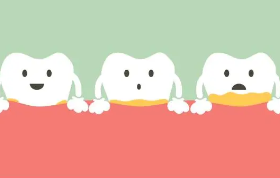Do you want to have a dazzling smile and healthy gums? Do you want to avoid cavities, bad breath, and gum disease? If you answered yes, then you need to pay attention to your dental hygiene and prevent plaque buildup on your teeth.
Plaque is a sticky film of bacteria that forms on your teeth every day. It can cause tooth decay, gum inflammation, and tartar formation if left untreated. In this article, we will explain what plaque is, how it affects your oral health, and how you can get rid of it with effective dental plaque treatments.
Key Takeaways
- Plaque is a sticky film of bacteria that forms on teeth and can lead to tooth decay, gum inflammation, and tartar formation if left untreated.
- Good oral hygiene practices, such as brushing, flossing, and rinsing with an antiseptic mouthwash, are essential for preventing plaque buildup.
- Professional dental treatments like scaling and root planing or dental laser treatments can effectively remove plaque and tartar.
- Natural remedies like baking soda, vinegar, and orange peel can help loosen and soften tartar, but should be used in conjunction with regular dental care.
What is Tooth Plaque?
Tooth plaque is a soft, sticky, and film of bacteria that forms on your teeth. It is composed of millions of microorganisms that feed on the sugars and starches in your food and produce acids that erode your tooth enamel. Plaque also contains saliva, food particles, and other substances that make it adhere to your teeth.
Plaque is the main cause of tooth decay and gum disease. If plaque is not dealt with regularly, it can harden into tartar, a yellow or brown substance that forms along the gum line and between the teeth. Tartar is more difficult to remove than plaque and can only be removed by a professional dental cleaning. Tartar also provides a breeding ground for more bacteria and can worsen your oral health problems.
Dental Plaque and Gum Health
Due to it’s nature the problems which plaque spreads are not limited to teeth only they also extend to dental plaques on gums which can also be a major problem. The bacteria in plaque can irritate and inflame your gums, causing them to become red, swollen, and tender. This condition is called gingivitis, and it is the first stage of gum disease. Gingivitis can also cause bleeding, receding, and bad breath.
If gingivitis is not treated, it can progress to periodontitis, a more serious form of gum disease. Periodontitis is when the plaque and tartar spread below the gum line and infect the tissues and bones that support your teeth. This can cause your gums to pull away from your teeth, creating pockets that fill with more bacteria and pus. Periodontitis can also cause your teeth to become loose, shift, or fall out. Want to know how tooth plaque is formed? You can check our blog on what is tooth plaque & how it is formed.

Effective Dental Plaque Treatments
The best way to prevent plaque and gum disease is to practice good oral hygiene. This means brushing your teeth twice a day with a soft-bristled toothbrush and an SLS free toothpaste, flossing daily to remove plaque from between your teeth, and rinsing with an antiseptic mouthwash to kill bacteria and freshen your breath.
However, sometimes brushing and flossing alone are not enough to remove plaque, especially if it has hardened into tartar. In that case, you may need to use some additional dental plaque treatments to help you get rid of it. Here are some of the most effective dental plaque treatments that you can try:
- Dental scaling and root planing: This is a professional dental procedure that involves scraping off the plaque and tartar from your teeth and below your gum line with special instruments.
- Dental laser treatment: This is a newer and less invasive dental procedure that uses a laser to remove plaque and tartar from your teeth and gums. It also kills the bacteria and stimulates the healing of your gum tissue.
- Dental plaque disclosing tablets: These are chewable tablets that contain a dye that stains the plaque on your teeth. They can help you see where the plaque is and how much of it you have.

How to Perform Teeth Tartar Removal at Home
While professional dental plaque treatments are the most effective way to remove tartar from your teeth, you may also want to try some natural remedies for dental tartar removal at home. These remedies can help loosen and soften the tartar, making it easier to brush or scrape off. However, they are not a substitute for regular dental care and should be used with caution and moderation. Here are some of the most popular natural remedies for dental tartar removal at home:
- Baking soda: Baking soda is a common household ingredient that can help neutralize the acids in plaque and whiten your teeth. You can make a paste of baking soda and water and apply it to your teeth with a toothbrush or a cotton ball. Leave it on for a few minutes and then rinse it off with water.
- Vinegar: Vinegar is another acidic substance that can help dissolve the tartar and kill the bacteria on your teeth. You can mix some vinegar with water and use it as a mouthwash or a gargle.
- Orange peel: Orange peel contains vitamin C and citric acid, which can help remove tartar and stains from your teeth. You can rub the inside of an orange peel on your teeth or make a paste of orange peel and water and apply it to your teeth. Leave it on for a few minutes and then rinse it off with water.
To learn more about plaque removal at home, head over to our blog on home remedies for dental plaque.
How to Get Rid of Black Tartar on Teeth
Sometimes, you may notice some black or brown spots on your teeth, especially near the gum line. This is a sign of black tartar on teeth, which is a more severe form of tartar that is caused by smoking, drinking coffee or tea, or taking certain medications. Black tartar on teeth can make your teeth look dirty and unattractive, and it can also increase your risk of tooth decay and gum disease.
The best way to combat black tartar on teeth is to quit smoking, limit your intake of coffee and tea, and consult your doctor about your medications. You should also visit your dentist regularly for professional dental cleaning, as black tartar is harder to remove than regular tartar. You can also try some of the natural remedies mentioned above, but they may not be very effective for black tartar.
Choosing the Best Products for Plaque Removal
Another important factor in plaque removal is choosing the best products for your oral hygiene. You should look for products that are designed to prevent and remove plaque, such as toothpaste, mouthwash, toothbrush, and dental floss. Here are some tips on how to choose the best products for plaque removal:
- Toothpaste: You should look for a toothpaste that has anti-plaque and anti-tartar ingredients, such as zinc citrate, triclosan, or pyrophosphate. These ingredients can help reduce the formation and accumulation of plaque and tartar on your teeth. One good toothpaste to remove plaque is Perfora SLS-Free Toothpaste.
- Mouthwash: You should look for a mouthwash that has antiseptic and antibacterial properties, such as chlorhexidine, cetylpyridinium chloride, or essential oils. These ingredients can help kill the bacteria in plaque and prevent gingivitis and bad breath.
- Toothbrush: You should look for a toothbrush that has soft bristles, which can gently clean your teeth and gums without damaging them. You should also look for a toothbrush that has a small head, which can reach the hard-to-clean areas of your mouth. You can check out our Sonic Electric Toothbrush which provides upto 10X effectiveness over regular toothbrushes.

Conclusion
In this article, we have shared some of the best dental plaque treatments that you can try, such as professional dental cleaning, dental laser treatment, dental plaque disclosing tablets, and natural remedies. We have also shared some tips on how to choose the best products for plaque removal, such as toothpaste, mouthwash, toothbrush, and dental floss.
We hope you enjoyed reading this article and learned something new. If you have any questions or feedback, please feel free to contact us. We would love to hear from you!
Thank you for reading and have a great day! 😊
Frequently Asked Questions on Dental Plaque Treatments
-
How do you remove hardened plaque?
Removing hardened plaque, also known as tartar, typically requires professional dental cleaning. However, diligent brushing with a SLS-free toothpaste, flossing, and using tartar-control mouthwashes at home can help prevent its buildup.
-
What do dentists do to remove plaque?
Dentists use special tools in a process called scaling to gently remove plaque and tartar from teeth and below the gumline. For more stubborn tartar, ultrasonic instruments may be used to break it up.
-
Is plaque removal painful?
Plaque removal is usually not painful. Most patients experience little to no discomfort, especially when the plaque is soft. However, if there's significant tartar buildup or gum disease, some sensitivity or discomfort may be felt.






